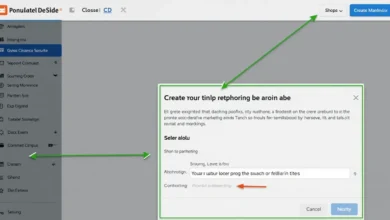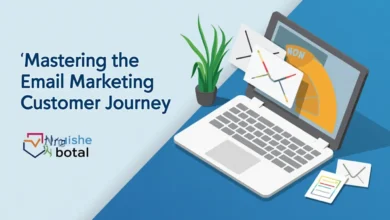Average Email Open Rate

When it comes to email marketing, the average email open rate is one of the most vital metrics that determines how well your campaigns are performing. You’ve put in the work, designed an eye-catching email, and crafted the perfect message, but if people aren’t opening it, your efforts may be in vain.
In this article, we’ll explore what the average email open rate really means, why it’s important, and how you can improve it. By following these insights and strategies, you can increase engagement, boost conversions, and take your email marketing game to the next level.
Table of Contents
What is the Average Email Open Rate?
The email open rate is essentially the percentage of recipients who open your email out of the total emails you send. It’s a straightforward calculation, but it tells you a lot about how effective your email marketing strategy is. Generally, this metric reflects your ability to catch your audience’s attention and provide value.
Industry Benchmarks
On average, most industries experience open rates between 15% and 25%, but these numbers can vary significantly depending on your industry. Here’s a quick look at average email open rates by sector:
| Industry | Average Open Rate |
|---|---|
| E-commerce | 15-18% |
| Health & Wellness | 20-25% |
| Nonprofits | 25-30% |
| Education | 20-25% |
| Retail | 15-20% |
Why the Average Email Open Rate Matters
Your average email open rate is more than just a number; it’s a measure of your ability to engage your audience and drive them towards action. When your open rate is high, it shows that your recipients find your emails valuable and relevant. Here’s why this metric is so crucial:
- Engagement Indicator: Higher open rates indicate that your audience is engaged, which can improve overall campaign success.
- Impact on Click-Through Rates (CTR): A higher open rate means more people have the chance to click through, increasing conversions.
- Insight into Audience Behavior: Understanding open rates can help you identify what resonates with your audience and make data-driven decisions to refine your email strategy.
Key Strategies to Improve Your Email Open Rate
If your open rate isn’t where you’d like it to be, don’t worry. There are plenty of strategies you can implement to turn things around.
Personalization
People are more likely to open an email when it feels personal. Addressing recipients by their name or tailoring content based on their behavior and preferences makes a big difference. With tools available today, personalizing emails has never been easier.
Quick Tips:
- Use the recipient’s first name in the subject line.
- Segment your audience to send more relevant content based on their interests.
- Customize email content based on previous actions (e.g., past purchases or browsing behavior).
Crafting Compelling Subject Lines
Your subject line is the first thing people see, so make it count. A strong subject line piques curiosity, creates urgency, or promises a benefit that encourages readers to open.
Quick Tips:
- Keep it short and to the point (around 5-7 words).
- Experiment with emotional language that resonates with your audience.
- Use action-oriented language and avoid spammy phrases.
Optimizing Send Times
When you send your emails can significantly impact open rates. People are more likely to check their email at specific times of the day or week, so you’ll want to experiment to find what works best for your audience.
Best Practices:
- Aim to send emails midweek (Tuesday to Thursday) for higher engagement.
- Try sending emails in the late morning (10 a.m.) or early afternoon (1-3 p.m.).
- Test different times and track performance to find your optimal sending time.
Audience Segmentation
Segmentation involves dividing your email list into smaller groups based on specific criteria like age, location, or purchase history. By doing this, you’re able to deliver content that aligns better with each group’s interests and preferences.
Segmentation Ideas:
- Create groups based on customer lifecycle stage (new customers, repeat buyers, etc.).
- Segment by past purchase behavior or product interests.
- Group based on engagement level, such as active vs. inactive subscribers.
Maintaining Sender Reputation and Deliverability
Your sender reputation, which includes factors like bounce rates and spam complaints, affects whether your emails land in the inbox or get flagged as spam. Maintaining a good reputation is crucial for boosting your open rate.
Tips for Improving Deliverability:
- Regularly clean your list by removing inactive or bounced email addresses.
- Avoid spammy language and overuse of exclamation marks.
- Use a verified email domain and follow anti-spam laws.
Measuring and Analyzing Your Email Open Rate
To truly understand how well your email campaigns are performing, it’s important to regularly measure and analyze your open rates.
Calculating Your Open Rate
Your open rate can be calculated with this formula:
- Open Rate = (Total Opens / Total Sent Emails) x 100
This calculation gives you a snapshot of how many people opened your email out of the total who received it.
Benchmarking Your Results
Once you know your open rate, compare it against industry standards to see how you’re performing. This gives you context and helps you set realistic goals for improvement.
A/B Testing for Improvement
Experimenting with different subject lines, email formats, or send times through A/B testing can be incredibly insightful. When you split-test variations, you can pinpoint what resonates most with your audience and optimize accordingly.
A/B Testing Tips:
- Test one variable at a time to see clear results (e.g., subject line).
- Run tests with a smaller portion of your audience first.
- Analyze results and apply successful changes across your list.
Frequently Asked Questions (FAQ)
What is a good average email open rate?
Generally, an open rate between 20-25% is considered good, but this can vary based on your industry and audience.
How can I improve my average email open rate quickly?
Try enhancing your subject lines, personalizing your emails, and segmenting your list for better relevance.
What affects my email open rate the most?
Subject lines, sender reputation, personalization, and sending times are among the top factors influencing open rates.
How often should I measure my email open rate?
Monitoring open rates for every campaign allows you to track trends and make adjustments as needed.
Conclusion:
Increasing your average email open rate isn’t about one quick fix—it’s a continuous process of optimizing and understanding what your audience values most. By using personalization, crafting attention-grabbing subject lines, and experimenting with timing and segmentation, you’ll be able to capture more attention and build stronger relationships with your subscribers.
Ready to put these strategies into action? Start implementing these tips in your next email campaign, track your results, and watch your engagement grow. And remember—regularly measuring and adjusting your strategy will keep your emails fresh, relevant, and irresistible to your audience.



